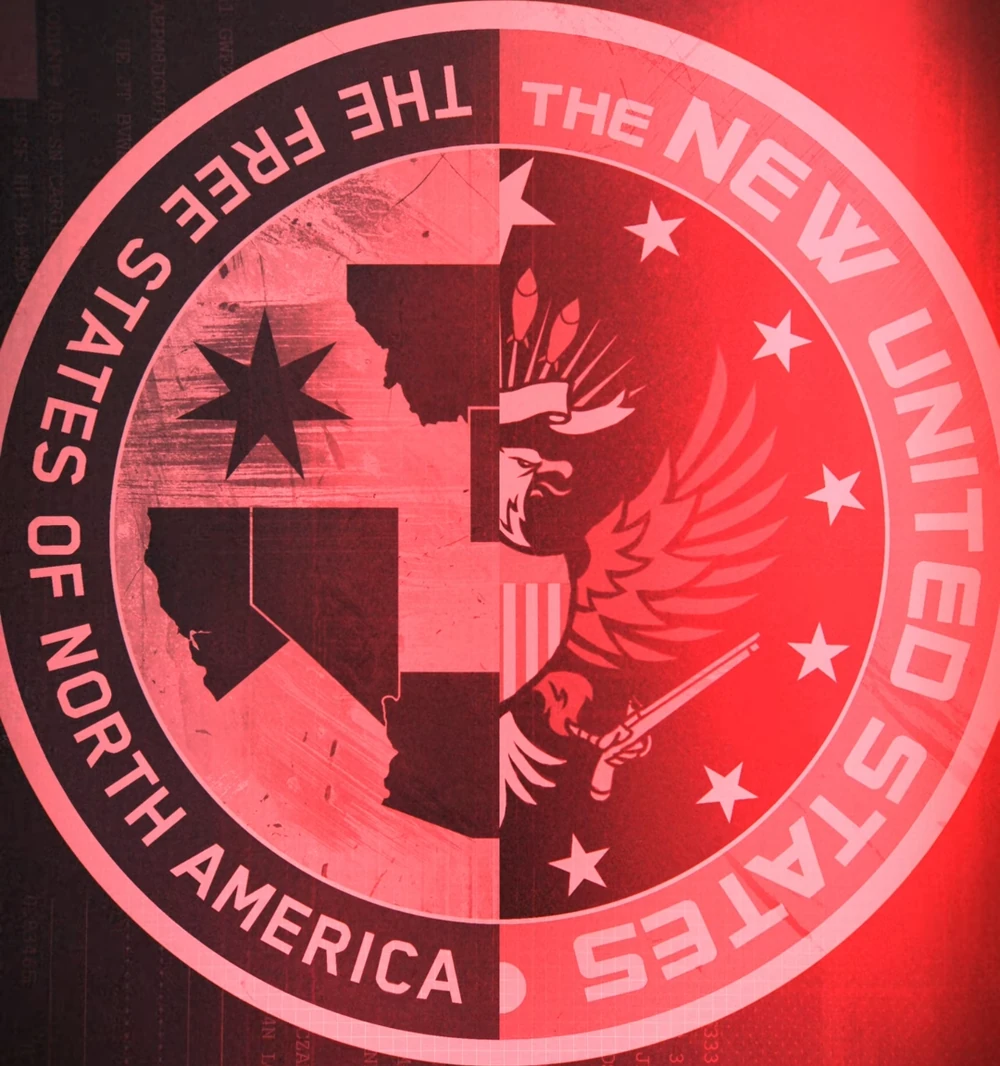Unification War
The Unification War began in 2069, following the reelection of Rosalind Myers as President of the New United States of America (NUSA). Her campaign had centered around a controversial unification program designed to bring the independent Free States back under federal control, claiming the initiative would strengthen the fractured nation. While some states, like Southern California and Utah, agreed to rejoin the Union, most of the remaining Free States—including Colorado, New Mexico, Wyoming, Montana, Arizona, Nevada, and Northern California—opposed the plan and formed a loose alliance to resist NUSA aggression. Meanwhile, Washington, Oregon, and Idaho chose to remain neutral, agreeing to certain concessions in exchange for their non-participation. The Republic of Texas, maintaining its independence, took no side and pursued its own agenda, opposing both the Free States’ alliance and the NUSA.
The war began with the NUSA, empowered by its full control over Militech’s nationalized military assets, launching attacks on Colorado, New Mexico, Wyoming, Montana, and Arizona. With Southern California now a federal stronghold and Utah backing Myers, federal troops moved swiftly across western territories. Arasaka Corporation, long a rival to Militech, covertly stepped into the conflict to support the Free States, supplying funding, arms, and corporate "security advisors" to bolster the resistance. Despite these efforts, the Free States struggled under the relentless advance of the technologically superior NUSA military.
One of the most brutal episodes of the conflict occurred during the Battle of Ridgecrest in Southern California. On a single day, at least 3,078 people were reported dead, making it the bloodiest confrontation of the entire war. This battle became a symbol of the war’s cost and the lengths the NUSA would go to enforce compliance.
By early to mid-2070, the tide of war had shifted heavily in favor of the NUSA. Federal forces had successfully occupied all of the warring Free States except for Northern California and Texas. In a final show of force, the NUSA carpet-bombed Sacramento, Northern California’s capital, during the night of June 6, leading to mass casualties and further demoralization of resistance forces.
Night City, situated between the NUSA-aligned Southern California and the defiant North, attempted to maintain neutrality but found itself under increasing pressure. Corporations began withdrawing funding from local development projects like the Pacifica District due to fears of an invasion. The situation deteriorated as the NUSA stationed a military detachment led by Colonel Kurt Hansen in parts of the city, including Pacifica. Internationally, the USSR stepped in with what it claimed was humanitarian aid—though many suspected it was covert weapons shipments. Simultaneously, Texas closed its borders to fleeing Night City refugees, worsening the regional crisis.
As another NUSA military division approached the outskirts of Night City, councilman Lucius Rhyne took action. Using a decade’s worth of political connections within the city council, he negotiated with the exiled Arasaka Corporation for protection. On June 12, an Arasaka supercarrier entered Del Coronado Bay. The display of force was enough to make NUSA troops withdraw from the area without a direct conflict. This bold move halted what could have been a turning point in the war.
Federal agents from the Federal Intelligence Agency had already infiltrated Night City but were recalled by direct order from President Myers following Arasaka’s intervention. Neither side was willing to escalate the conflict into a full-scale war that could draw in foreign powers and potentially trigger a global crisis. Recognizing the unsustainable cost of the war and the diplomatic deadlock, all parties moved toward peace.
Negotiations culminated in the Treaty of Unification—also called the Arvin Accord—signed in Arvin, Southern California. The treaty officially ended the Unification War. Under its terms, the Free States retained their autonomy but were now required to cooperate with the NUSA’s federal government and cease any internal hostilities. Night City emerged from the treaty as a fully independent international free city, operating outside the jurisdiction of both Northern California and the NUSA. Texas did not sign the treaty and remained a sovereign and oppositional state.
The end of the war left no clear victor. Each side spun the outcome in their favor: the NUSA touted the war as a step toward national reunification, while the Free States pointed to their survival as a triumph of independence. Arasaka emerged as the biggest winner of the conflict. The corporation had its post-Fourth Corporate War ban lifted, allowing it to reestablish operations in North America.
The war’s aftermath brought sweeping changes, particularly in Night City. Though it had secured its autonomy, the return of corporate influence was swift and aggressive. Corporations poured money into rebuilding the city to create a strategic foothold on the West Coast. In a symbolic gesture of this new era, the newly elected mayor, Lucius Rhyne, and the city council approved the construction of Arasaka’s new American headquarters in downtown Night City—on the ruins of its previous facility destroyed in 2023.
Meanwhile, the NUSA constructed a physical border wall across the Badlands separating Southern and Northern California. Despite Northern California’s independence, the NUSA extended this border line, physically dividing the territory and underscoring the unresolved tensions that lingered after the war’s formal conclusion.
Conflict Type
War



Comments